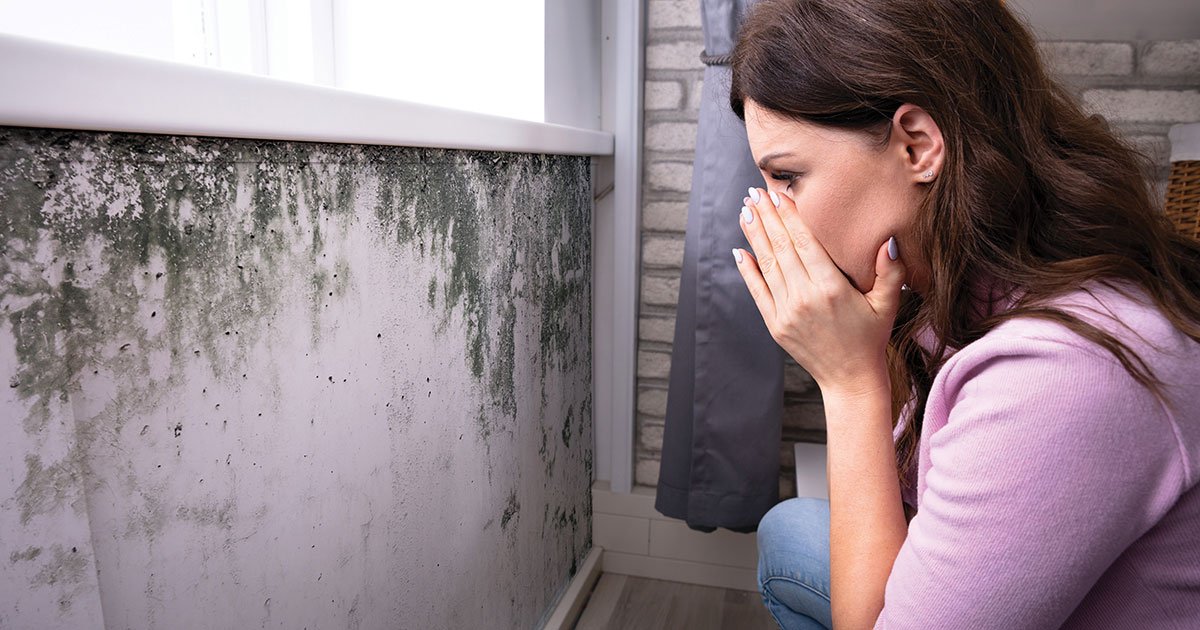
Health Risks Associated With Untreated Water Damage: Mold, Bacteria, and More
Table of Contents
ToggleKey Takeaways
- Neglecting water damage accelerates the growth of harmful mold and bacteria, posing immediate and long-term health dangers to building occupants.
- Typical health effects range from respiratory infections and aggravated allergies to severe illnesses, particularly in vulnerable individuals such as children and the elderly.
- Fast intervention and thorough repair can drastically reduce or eliminate the risks associated with hidden moisture and microbial growth.
- Unresolved water damage not only impacts health but also attracts pests, produces unpleasant odors, and threatens the safety of property structures over time.
- Professional assessment can uncover and remediate concealed water issues that could otherwise compromise overall indoor air quality and wellness.
Why Untreated Water Damage Should Never Be Ignored
Water damage may start as a seemingly minor inconvenience—perhaps a leaky pipe, a damp wall, or a puddle in the basement. However, if left untreated, water damage can escalate quickly, compromising not just the structure of a property but also the health and safety of those living within it. Prolonged moisture exposure creates an ideal mold growth environment, which can spread rapidly behind walls, under floors, and in hidden corners. Mold spores can lead to respiratory problems, allergies, skin irritation, and even serious infections in people with weakened immune systems. Standing water and moisture also attract bacteria, viruses, and pests, further compounding health risks. Over time, water damage also weakens the integrity of wood, drywall, and insulation, making buildings less safe and more costly to repair.
Recognizing the urgency of these issues, many homeowners turn to affordable water damage repair specialists who understand the immediate and long-term implications of untreated water exposure. These professionals address visible damage, assess moisture levels within walls and floors, identify the root cause, and assess proper drying and sanitization. Quick and thorough intervention can prevent mold infestation, halt bacterial spread, and reduce the chance of structural deterioration. Importantly, untreated water damage is not just a maintenance issue—it’s a public health concern. Left unaddressed, it can impact indoor air quality and create an unsafe living environment for children, older people, and anyone with respiratory conditions. Acting swiftly to repair water damage is a critical step in maintaining a healthy, livable home, and entrusting the job to specialists who offer both affordability and expertise can make all the difference.
Mold: Silent Growth with Compounding Health Risks
Mold is perhaps the most visible—and feared—result of untreated water damage. While mold spores are omnipresent in indoor and outdoor environments, they typically remain dormant until excess moisture provides ideal growth conditions. When a leak or flood occurs, mold can form visible clusters on walls, ceilings, insulation, and wooden beams within 24 to 48 hours. The “black mold” species known as Stachybotrys chartarum stands out for its toxic mycotoxins, which can be especially hazardous if inhaled or if they come in contact with the skin. Severe symptoms range from persistent fatigue and cognitive problems to asthma attacks and even neurological disorders, particularly among small children, the elderly, and immunocompromised individuals.
However, even so-called “benign” molds can become a serious problem. Numerous studies show that even non-toxic molds can dramatically worsen allergies, trigger asthma attacks, and cause ongoing irritations like watery eyes, skin rashes, and sore throats. People with chronic respiratory illnesses, weakened immune systems or mold allergies can suffer disproportionately, with seemingly minor dampness escalating into dangerous chronic exposure after just a brief period of inattention.
Bacteria: Unseen and Underestimated Perils
Bacteria multiply unnoticed, often causing damage that rivals, or even exceeds, that of mold. Water sources such as flash floods, plumbing backups, or sewer overflows bring a tidal wave of dangerous microorganisms—E. coli, Salmonella, Hepatitis A, and others—into contact with every affected surface. These bacteria survive for long periods, clinging to drywall, flooring, and even upholstery or personal belongings. Without adequate cleanup and disinfection, bacteria remain viable and can infect building occupants via inhalation, skin contact, or ingestion. This risk is amplified in children who crawl and play on the floor or pets who lick damp spots or toys.
Research confirms that the indoor concentration of bacteria can spike by magnitudes after flooding or recurring leaks—one study reported bacterial counts up to fifty times higher than in healthy homes when water-damaged carpets and wall linings went untreated. Even adults with robust immune systems can fall victim to lingering bacteria in the air, manifesting as persistent fevers, recurring gastrointestinal issues, or unexplained skin problems. Young people, the elderly, and those with underlying health conditions are at the most significant risk, as repeated exposure can lead to chronic or severe illness requiring hospitalization.
Additional Consequences: Pests, Allergens, and Indoor Air Quality
Water damage’s impact stretches far beyond mold and bacteria. Dark areas attract cockroaches, ants, rodents, and dust mites, setting the stage for further contamination and allergen buildup. Cockroach droppings, for instance, contain proteins known to cause asthma flare-ups, particularly in children. Rodents, which are experts at finding their way into damp, neglected nooks, present a risk for diseases ranging from Leptospirosis to more exotic viral illnesses. Besides pests, waterlogged walls and floors become perfect conditions for wood rot and degradation, resulting in a musty ambiance that’s hard to ignore.
Volatile organic compounds (VOCs) add another layer of trouble. As natural and synthetic materials break down due to excess dampness, they release gases and odors that irritate the eyes, throat, and lungs, sometimes triggering migraines or persistent sinus issues. This can undermine comfort, safety, and productivity inside homes or businesses, forcing expensive remediation far beyond surface-level repairs. Over time, deteriorating structural materials will compromise the building’s safety, raising repair bills and the risk of physical injury.
Recognizing Hidden Signs of Water Damage
- Musty, earthy odors: If you detect odd smells that linger—especially after cleaning—there’s likely hidden mold or mildew.
- Soft or spongy floors and walls: Standard signals that water has been absorbed into wood or drywall, fostering decay beneath the surface.
- Mysterious, persistent health issues:Chronic coughs, congestion, watery eyes, and rashes with no obvious origin may be caused by indoor air pollution from microbial overgrowth.
- Discoloration, bubbling, or warped finishes: Water-damaged areas often show visible signs well after the leak starts, alerting you to call for immediate investigation and repairs.
How to Respond: Fast Action for Health and Safety
- Extract all standing water swiftly. The sooner you can remove accumulated water with pumps, vacuums, or towels, the less likely pathogens are to take hold.
- Ensure maximum ventilation and rapid drying. Open windows, run exhaust fans and deploy dehumidifiers in every affected room to drive down humidity and halt microbial growth.
- Remove and dispose of porous or contaminated materials. Items like padded carpets, soggy insulation, and upholstered furniture usually cannot be thoroughly cleaned and should be discarded.
- Scrub and disinfect hard surfaces thoroughly. Use industrial-strength cleaners or antimicrobials to prevent recurrences, especially if floodwaters or sewage are involved.
- Track household health symptoms closely. If anyone experiences worsening breathing issues, stomach problems, or unusual fatigue, see a healthcare professional and mention possible exposure to water damage.
- Engage experienced water damage professionals. Persistent leaks, hidden moisture, or suspected mold behind walls require advanced equipment and trained hands for total removal and repair.
Who Faces the Greatest Health Risks?
While anyone in a contaminated environment can potentially become ill, certain groups are particularly vulnerable to the health hazards associated with untreated water damage. Children and babies, due to their still-developing respiratory systems, are at a higher risk for complications from mold exposure. Elderly adults often have weakened immune systems and may struggle to recover from illnesses that arise from contaminated conditions.
Individuals suffering from respiratory issues, such as asthma or chronic obstructive pulmonary disease (COPD), may experience exacerbated symptoms or recurrent attacks when exposed to mold spores or humid air. Even moderate exposure to water-damaged areas can lead to increased respiratory distress in these individuals, making it crucial for them to avoid such conditions whenever possible.
Moreover, infants and seniors are particularly at risk for serious complications, including pneumonia, as they might not exhibit apparent symptoms until the situation becomes critical. Pet owners should also be aware that animals can become ill due to contaminated environments. Pets may show signs of distress or illness even before humans notice visible symptoms of mold growth or excessive humidity. This underscores the importance of regular inspections and prompt action when water damage occurs.
Protecting Your Home and Health
Prevention is always preferable. Inspect basements, under sinks, behind appliances, and in attics for leaks or dampness at least every few months and after major storms or plumbing incidents. Quick action—extracting water, drying promptly, and sanitizing thoroughly—halts the cycle of contamination and shields both property and occupants. When leaks are extensive or mold or bacteria are suspected, enlist professional help immediately.
Untreated water damage poses a profound but preventable threat. Educate yourself and your family about its signs, monitor your space for symptoms, and don’t hesitate to rely on qualified experts when needed. Solid prevention and timely response protect your property, comfort, and—critically—your long-term health and peace of mind.

Benjamin Ortiz is a digital marketing expert. He currently runs an SEO agency and a survival gear review blog.






